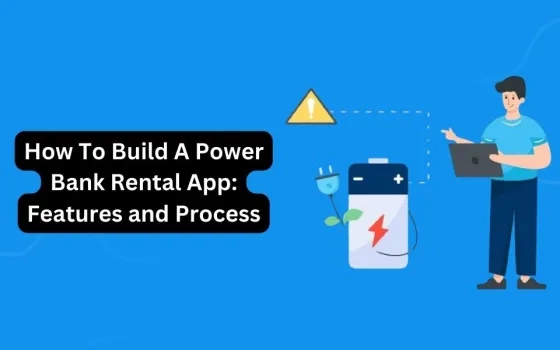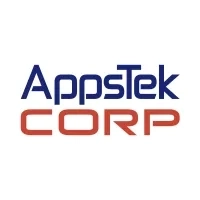With the increasing reliance on smartphones and portable devices, ensuring a consistent power supply has become crucial. A power bank rental app provides a practical solution, enabling users to rent power banks from various locations conveniently. Such apps are gaining popularity due to their ease of use and the growing need for on-the-go charging options. This blog will guide you through the process of developing a power bank rental app, detailing essential features, the development process, potential challenges, and future trends. Whether you are an entrepreneur looking to invest in this business or a developer planning to create the app, this comprehensive guide will provide valuable insights.
What is Power Bank Rental App?
A power bank rental app is a mobile application that allows users to rent portable chargers for their devices. These apps are typically linked to a network of rental stations placed in high-traffic public locations such as shopping malls, airports, train stations, cafes, and event venues. Users can locate the nearest rental station through the app, rent a power bank, use it to charge their devices, and return it to any station within the network. The process is facilitated by features like QR code scanning for quick rentals, real-time location services to find stations, and integrated payment systems for seamless transactions. This innovative solution addresses the need for accessible charging options, especially in situations where carrying a personal charger is impractical.
Power Bank Sharing Market
The power bank sharing market has witnessed substantial growth in recent years. As mobile device usage continues to rise, so does the demand for convenient charging solutions. Key players in the market, such as ChargeSPOT, PowerShare, and ChargedUp, have established successful models that cater to this growing need. According to market research, the global power bank rental market is expected to expand significantly, driven by increasing smartphone penetration and the adoption of cashless payment systems. Additionally, PwC predicts that the sharing economy will expand to $335 billion by 2025, driven primarily by globalization and urbanization. These same factors are also fueling the popularity and growth of the power bank sharing market, making it a promising investment opportunity.
Why You Should Invest In Power Bank Rental Business?
Investing in the power bank rental business offers numerous benefits and opportunities for growth. Here are several compelling reasons to consider this investment:
1. High Demand
With the increasing reliance on mobile devices, the demand for portable charging solutions is continuously rising. Users need their devices to be functional at all times, making power bank rentals a necessity in many public spaces.
2. Recurring Revenue
The power bank rental model generates a steady stream of recurring revenue. Users pay for each rental period, which can create a consistent income flow. Additionally, late return fees can contribute to additional revenue.
3. Low Operating Costs
Once the infrastructure is established, the operating costs for a power bank rental business are relatively low. Maintenance of rental stations and power banks is minimal, and the primary expenses are related to the initial setup and periodic updates.
4. Scalability
The business model is highly scalable. Starting with a few key locations, the network of rental stations can easily expand to new areas and even different cities or countries. The scalability of the business ensures long-term growth potential.
5. Technological Advancements
Advances in technology, such as improved battery efficiency and compact design, make power banks more effective and user-friendly. Integrating the latest technologies can enhance the service offering and attract more users.
6. Sustainability
The power bank rental business promotes the use of reusable power banks, contributing to environmental conservation by reducing the need for single-use batteries. This eco-friendly aspect can attract environmentally conscious consumers and positively impact your brand image.
7. Partnership Opportunities
Collaborating with businesses such as cafes, restaurants, shopping malls, and transportation hubs can provide mutually beneficial partnerships. These locations can host rental stations, attracting more foot traffic, while your business gains prime locations for users to access power banks.
8. Market Growth
The global power bank rental market is expected to grow significantly, driven by increasing smartphone penetration and the adoption of cashless payment systems. The market's expansion presents an excellent opportunity for early investors to gain a strong foothold.
9. User Convenience
Offering a convenient service that solves a common problem can lead to high user satisfaction and loyalty. As users rely on the service to keep their devices charged, they are likely to become repeat customers, ensuring steady business.
10. Competitive Advantage
Entering the power bank rental market early can provide a competitive advantage. Establishing a brand and a reliable network of rental stations before the market becomes saturated allows you to capture a significant market share.
Features To Consider for Power Bank Rental App Development
When developing a power bank rental app, it's essential to include features that enhance user experience, ensure smooth operations, and provide comprehensive management tools. Here are twelve critical features to consider:
1. User Registration and Profile Management
· Enable users to sign up using email, phone numbers, or social media accounts.
· Allow users to create and manage their profiles, including viewing rental history and payment methods.
2. Real-Time Rental Station Locator
· Use GPS technology to display nearby rental stations on a map.
· Provide detailed information about each station, including availability and operating hours.
3. QR Code Scanning
· Facilitate quick rental and return processes with QR code scanning.
· Ensure seamless integration with rental stations for efficient transactions.
4. Seamless Payment Integration
· Support multiple payment options, such as credit/debit cards, digital wallets, and mobile payments.
· Implement secure and encrypted payment gateways to protect user information.
5. Push Notifications and Alerts
· Send notifications for important updates, such as rental duration, battery status, and special promotions.
· Alert users when they are approaching the rental time limit or if a nearby rental station has available power banks.
6. Rental History and Receipts
· Maintain a detailed record of all past rentals, including dates, times, and payment details.
· Provide digital receipts for user reference and accounting purposes.
7. Customer Support
· Offer in-app customer support through chat, email, or phone.
· Provide an FAQ section to address common user queries and issues.
8. Admin Dashboard
· Equip administrators with a comprehensive dashboard to manage rental stations, monitor transactions, and analyze user data.
· Include tools for inventory management, station maintenance, and financial reporting.
9. Battery Status Monitoring
· Display the battery status of rented power banks in real-time.
· Notify users when the battery is low and suggest nearby rental stations for returns or exchanges.
10. Promotions and Discounts
· Offer promotional codes, discounts, and referral bonuses to attract and retain users.
· Implement a loyalty program to reward frequent users with benefits and incentives.
11. Multi-Language Support
· Cater to a diverse user base by offering multi-language support.
· Ensure the app's interface and customer support are accessible in various languages.
12. Geofencing and Location-Based Services
· Implement geofencing to trigger location-based notifications and services.
· Provide users with relevant information and offers based on their current location.
Process To Follow For Power Bank Rental App Development
Building a power bank rental app involves several critical steps, from initial research and planning to deployment and maintenance. Each stage requires careful consideration and execution to ensure the app meets user needs and operates smoothly. Here’s a detailed overview of the development process:
1. Market Research and Planning
Begin with thorough market research to understand the target audience, competitors, and market trends. Identify the specific needs and preferences of potential users and analyze successful models in the market. This stage involves defining the app's goals, unique selling points, and key features. Planning should also include deciding on the business model, revenue streams, and a detailed roadmap for the app development process.
2. UI/UX Design
The design phase focuses on creating an intuitive and visually appealing user interface. This involves wireframing, prototyping, and user flow mapping to ensure a seamless user experience. The design should prioritize ease of use, with clear navigation and accessibility. Engaging graphics and a consistent theme can enhance the overall appeal, making the app attractive and user-friendly.
3. App Development
Development involves choosing the right technology stack and programming languages suitable for both the frontend and backend of the app. This stage includes coding the app's functionalities, integrating third-party APIs for payment processing, GPS tracking, and QR code scanning. Backend development ensures data management, user authentication, and server communication. Collaboration between developers, designers, and project managers is crucial for smooth progress.
4. Testing
Rigorous testing is essential to identify and fix any bugs or issues before the app's launch. This includes functional testing to ensure all features work as intended, performance testing to check the app's responsiveness and load times, and compatibility testing across different devices and operating systems. User acceptance testing (UAT) can help gather feedback from real users and make necessary adjustments to improve the app's functionality and user experience.
5. Deployment
Once the app is thoroughly tested and refined, it's time for deployment. This involves submitting the app to relevant app stores, such as Google Play and the Apple App Store, and ensuring it meets all guidelines and requirements. Setting up rental stations equipped with power banks and integrating them with the app's system is also part of this phase. A well-planned launch strategy, including marketing and promotional activities, can help attract initial users and create buzz around the app.
6. Marketing and Promotion
Effective marketing strategies are crucial for the app's success. Utilize digital marketing techniques such as social media campaigns, influencer partnerships, and content marketing to reach potential users. Offering promotional discounts and referral bonuses can incentivize users to try the service. Building a strong online presence through a dedicated website and engaging content can further enhance visibility and attract more users.
7. Maintenance and Updates
Post-launch, continuous maintenance and regular updates are necessary to keep the app running smoothly and introduce new features. Monitoring user feedback and addressing any issues promptly helps maintain user satisfaction. Regularly updating the app to incorporate new technologies, improve performance, and add new functionalities ensures it remains competitive and meets evolving user needs. Providing ongoing customer support is also essential for addressing user queries and maintaining a positive reputation.
Challenges and Their Solutions To Overcome While Building A Power Bank Rental App
Building a power bank rental app presents several challenges, but with the right strategies, these can be effectively managed:
1. Inventory Management
Managing the inventory of power banks is crucial to ensure availability and prevent loss. Implementing a real-time inventory tracking system can help monitor the location and status of each power bank. Use technology such as RFID or GPS tracking to keep accurate records of power bank movements and conditions.
2. User Adoption
Attracting and retaining users can be challenging in a competitive market. To overcome this, focus on providing a seamless user experience with an intuitive interface and reliable service. Offer promotional discounts, referral bonuses, and partnerships with popular locations to increase visibility and encourage initial trials.
3. Payment Security
Ensuring secure payment transactions is critical to gaining user trust. Implement advanced encryption and secure payment gateways to protect user data and financial information. Regularly update security protocols and conduct vulnerability assessments to safeguard against potential breaches.
4. Device Compatibility
The app must function smoothly across various devices and operating systems. Conduct thorough compatibility testing to ensure the app performs well on different smartphones and tablets. Optimize the app’s performance to handle different screen sizes and resolutions effectively.
5. Maintenance of Rental Stations
Ensuring that rental stations are well-maintained and operational is essential for user satisfaction. Establish a routine maintenance schedule and set up a responsive support system to address any issues promptly. Regularly inspect and service rental stations to ensure they are in good working condition.
6. Logistics and Supply Chain Management
Coordinating the supply and distribution of power banks to rental stations can be complex. Develop a robust logistics plan to manage inventory replenishment and power bank redistribution. Use data analytics to forecast demand and optimize the supply chain.
7. Customer Support
Providing effective customer support is vital for resolving issues and maintaining user satisfaction. Offer multiple support channels, such as in-app chat, email, and phone support. Train support staff to handle common issues and provide quick resolutions to enhance the user experience.
8. Technical Issues
Addressing technical issues promptly is crucial for maintaining app performance and reliability. Set up a dedicated team for technical support and implement monitoring tools to detect and resolve issues quickly. Regularly update the app to fix bugs and improve performance.
9. Regulatory Compliance
Ensuring compliance with local regulations and standards is important for operating legally and avoiding penalties. Research relevant regulations regarding electronic waste, data protection, and business operations. Implement practices that comply with these regulations and seek legal advice if necessary.
10. Competition
Competing with established players in the market can be challenging. Differentiate your app by offering unique features, superior service quality, and competitive pricing. Conduct market analysis to identify gaps in the market and leverage them to gain a competitive edge.
By addressing these challenges with proactive solutions, you can create a robust and successful power bank rental app that meets user needs and stands out in the competitive market.
Future Trends Of Power Bank Rental App Development
As the power bank rental industry evolves, several emerging trends are shaping its future. Understanding these trends can help businesses stay ahead of the curve and capitalize on new opportunities:
1. Integration with Smart Wearables
The integration of power bank rental services with smart wearables, such as smartwatches, is becoming more prevalent. This allows users to manage their rentals directly from their wearable devices, making the process more convenient and accessible.
2. Artificial Intelligence and Machine Learning
AI and machine learning are set to enhance user experience and operational efficiency. AI can be used for personalized recommendations, predictive maintenance, and optimizing inventory management. Machine learning algorithms can analyze usage patterns to forecast demand and improve service delivery.
3. Blockchain Technology
Blockchain offers a secure and transparent way to handle transactions and data management. Implementing blockchain can help prevent fraud, streamline payment processes, and provide an immutable record of transactions, enhancing trust and security in the rental system.
4. Green Energy Solutions
As sustainability becomes a priority, power banks powered by renewable energy sources, such as solar panels, are gaining traction. This trend aligns with the growing consumer demand for eco-friendly solutions and helps reduce the environmental impact of traditional power banks.
5. Expansion of IoT (Internet of Things)
IoT technology is increasingly being integrated into power bank rental systems. IoT-enabled power banks and rental stations can provide real-time data on usage, location, and battery status, improving inventory management and user experience.
6. Enhanced User Experience Through Augmented Reality (AR)
AR technology can enhance the user experience by providing interactive features, such as virtual guides for locating rental stations or visualizing power bank usage. AR can also assist in troubleshooting and user education.
7. Advanced Payment Solutions
The adoption of advanced payment solutions, such as cryptocurrency and biometric authentication, is expected to grow. These technologies offer additional layers of security and convenience, catering to the evolving preferences of tech-savvy users.
8. Increased Collaboration with Retailers and Public Spaces
Partnerships with retailers, transportation hubs, and public spaces are likely to expand. These collaborations can increase the availability and visibility of rental stations, providing users with more convenient access points.
9. Customizable Rental Plans
Offering customizable rental plans, such as subscription-based models or tiered pricing, can attract a broader user base. Flexible plans allow users to choose options that best fit their needs, whether for short-term or long-term use.
10. Integration with Other Mobility Services
Integration with other mobility services, such as bike or scooter rentals, can create a seamless experience for users. This trend leverages the growing demand for integrated urban mobility solutions and enhances the overall convenience for users.
By staying informed about these future trends, businesses can innovate and adapt their power bank rental apps to meet evolving user needs and capitalize on emerging opportunities.
Conclusion
Building a power bank rental app involves careful planning, robust development, and strategic marketing. By incorporating essential features and addressing potential challenges, you can create a successful app that meets the growing demand for portable charging solutions. As the market continues to evolve, staying updated with future trends and technologies will ensure the longevity and profitability of your power bank rental business.




















